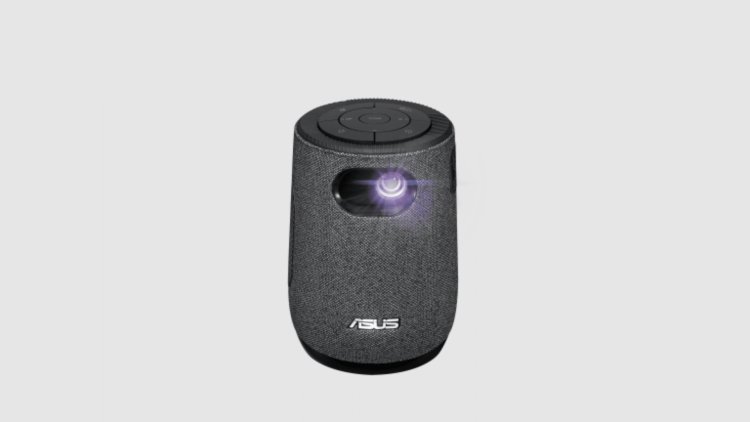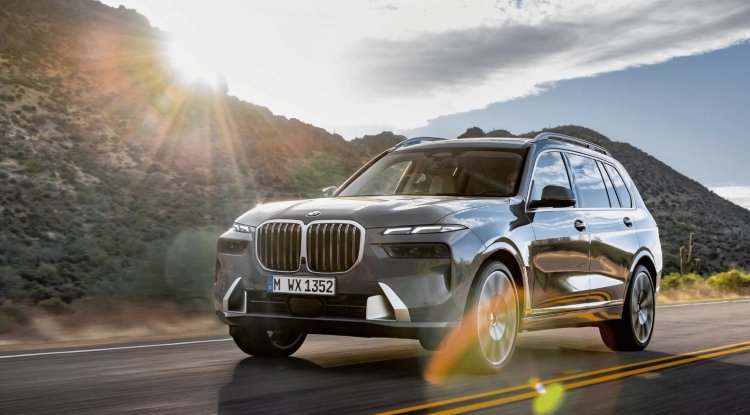Asus ZenBeam Latte L1 Review

On this occasion, we look at the Asus ZenBeam Latte L1, one of the tiniest projectors on the market, whose name refers to its coffee cup-style appearance. This small miracle features a 1280x720p DLP LED bulb with 300 lumens and a battery that lasts more than 2 hours in standard mode.
Thanks to its Wi-Fi and Bluetooth connections, Android-based system, and an HDMI input, it's ideal for watching series, movies, or just listening to music. It also has a 10W Harman/Kardon audio system that will astonish you. It even has internal storage, albeit the Google Play Store is not integrated.
The Asus ZenBeam Latte L1 gets its name from the shape, which is essentially a typical coffee cup with somewhat larger dimensions. It's only 90 mm in diameter and 131 mm tall, so it fits comfortably in the palm of your hand. The weight is comparable to a Bluetooth speaker weighing less than 600 grams.
The projection lamp is shielded by the glass and somewhat dipped inwards in what would be the front of the Asus ZenBeam Latte L1 to avoid direct strikes if it falls. Because the focus is manual, we have a wheel on the right side that allows us to fine-tune it. It also integrates with an air intake grill.
We walk to the other side, where a massive grille has been installed through which the hot air will escape, as well as the sound from the integrated speakers, which are actually facing backward.
A complete control panel for the device is located at the top in a circular configuration, with peripheral buttons for power, home, back/OSD, and Bluetooth speaker mode. The navigation controls for menus and volume up/down will be in the inner ring, with the menu in the center. Everything is highly user-friendly and intuitive.
The projector connections are located in the back area, albeit the crooked printed Harman / Kardon branding does not go undetected on them. Although it might not appear to be much, it does detract from your aesthetic score.
For remote control, an IR (infrared) sensor has been inserted in the central area. To avoid being so restricted in position, a Bluetooth control would have been great.
- 3.5mm jack headphone output
- HDMI con HDCP
- USB 2.0
- DC-In
- Reset button
- Battery charge indicator LED
The existence of an HDMI port was predicted, as it will provide a maximum resolution of 1920x1080p, allowing the lamp to be digitally generated, despite the native resolution being 720p.
Because we have to use its own converter, a USB-C connector would be great for charging and powering the projector instead of a Jack. According to Asus, USB 2.0 enables storage devices as well as peripherals such as a keyboard and mouse. Another effect of the smaller interior space is that it just has a headphone output and no external speaker output.
The Asus ZenBeam Latte L1 is equipped with Wi-Fi 802.11 b/g/n/ac at 2.4 and 5 GHz frequencies, as well as Bluetooth 5.0. It offers wireless screen projection in this fashion, but only on Android, as it is not possible on Windows.
The portable speaker projector can also be controlled with Bluetooth, but not with the remote because it is IR. This reduces the coverage range by requiring the remote to be focused on the back sensor, as well as having a low angle of vision because it will not operate next to it, much less on the front.
This projector has a native resolution of 1280x720p and employs DLP technology with an LED bulb for its projection mechanism. Although it supports a maximum of 1080p at the input, it may digitally recreate it with quality losses. Lamp life is predicted to be 30,000 hours on average.
With this suitable resolution for the type of projector, we have a short throw lens capable of 40" at 1m and up to 120" with good sharpness at 3.2m thanks to its 1.2 ratios: one. The opening capacity is superior to that of a recently tested direct competitor projector, the BenQ GV30.
Although it is not indicated whether the Asus ZenBeam Latte L1's brightness is ANSI or not, the user experience indicates that we will be able to project material with good visibility in evening light or dimly lit rooms.
It has automatic keystone correction up to 40o and provides 120 percent color coverage in sRGB. We can modify the image's orientation in the OSD, for example, if we position it on a table or the ceiling, as well as the color and operating modes.
It's a portable projector, with a built-in 6,000 mAh battery that ensures and fulfills a maximum autonomy of 3 hours in ECO mode, and more than 2 hours in regular mode with the brightness set to 50%.
The highest power usage is only 36W, which is less than its competitors who offer a similar experience. The cooling system consists of a fan that produces roughly 30 dBA of noise; it is not particularly loud, but the sound it produces is quite harsh and irritating.
We've adjusted the brightness to maximum and the temperature to warm because this is where the Asus ZenBeam Latte L1 gives us the finest viewing experience. It's remarkable how wonderful it appears for its small size, and while this has nothing to do with the lamp's power, it's always a pleasant sensation.
The light corrections for the framing effect around the projection are flawless, an effect that many projectors, particularly non-LED projectors, have. The image rectangle is perfect in this case, giving us a better sense of contrast, despite the fact that it is not particularly high a priori.
Because we don't have a 30-bit bulb or a high brightness, the color volume is average/low, however, we must underline that this is a portable and extremely small projector, consuming just 35W.
We are really pleased with the good image resolution in very wide diagonals since we are essentially using the camera's maximum distance and capacity in our image captures.
Another minor drawback is its 60 Hz refresh rate, which is identical to that of a conventional screen, but it is not a projector meant for gaming. We see a pretty balanced color calibration in this example, with LED bulbs growing better and better in this sector where they have always provided rather chilly colors.
Even more surprising is the sound system, which, despite its small size, provides an excellent viewing experience for movies and other media. The sound is fairly detailed, with no hollow or canned impression, and the profile is very well adjusted. The mids stand out the most, while the highs are well-controlled even at full volume.





























